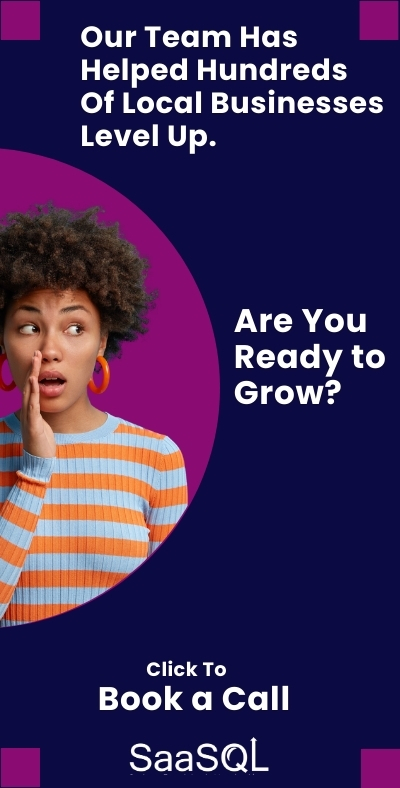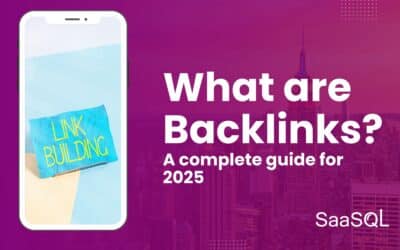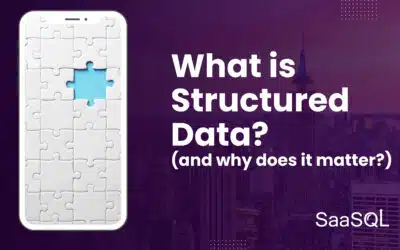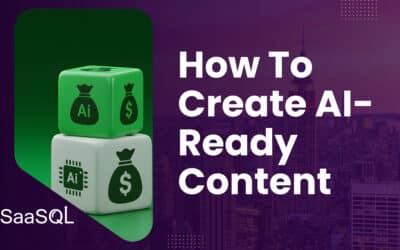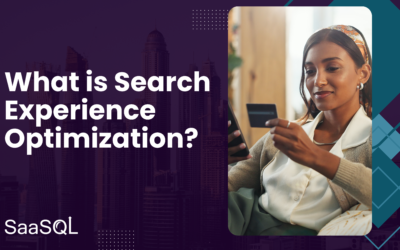How to Use SEO and Paid Search Together
When it comes to building a Search strategy, businesses often find themselves trapped in a narrow mindset, fixated solely on either SEO or PPC as their go-to solution. Whether through in-house teams, or “specialist agencies” these tactics are often siloed, handled in isolation. Ultimately, this causes both elements to miss out on the powerful synergy and performance that marketing teams can realize when they figure out how to use SEO and paid search together as a single, comprehensive strategy.
This comprehensive guide not only explores the distinctive advantages offered by each marketing approach but also sheds light on the pitfalls associated with a siloed approach. By understanding the unique benefits of both SEO and PPC, you can create a complete search strategy that seamlessly aligns your SEO and paid media efforts in a way that yields remarkable outcomes.

How To Use SEO and Paid Search Together: Unraveling the Interconnected World of SEO and PPC.
SEO and PPC are distinct methodologies, each possessing unique traits. However, beneath the surface, these seemingly divergent approaches share a symbiotic relationship, working in harmony to bolster a company’s online presence. When harnessed effectively, this hidden synergy can lead to a significant enhancement in the overall performance, and yet, it’s critical that we have a full understanding of their individual strengths and limitations. By exploring the nuanced benefits of each strategy and illuminating the strengths and limitations we can build a game plan that allows one to fully support the other.
How To Use SEO and Paid Search Together: A Comprehensive SEO Overview
Search Engine Optimization is a multifaceted strategy aimed at enhancing a website’s visibility on search engines like Google or Bing. At its core, it involves demonstrating to the Search Engines, that your website is most representative of the search being conducted. Unlike paid traffic, organic traffic refers to website visits that are not generated a paid media budget. It encompasses various sources, including organic search engine links, website directories and direct traffic, where users input the website’s URL directly into their browsers. Additionally, organic traffic encompasses referring traffic, originating from other websites linking to the site, and search engine traffic derived from search queries, videos, or images.
How To Use SEO and Paid Search Together: Exploring the Advantages of SEO
SEO offers a multitude of advantages that can significantly boost your website’s visibility and, consequently, amplify your chances of generating increased sales, leads, and clients. One of the key strengths of SEO lies in its ability to attract high-intent website traffic from individuals actively seeking your products or services. This targeted traffic often results in higher conversion rates, surpassing what is typically observed with PPC campaigns. Consequently, the return-on-investment (ROI) with SEO tends to be higher when compared to PPC.
Activities such as content development and technical onsite optimization, integral components of SEO, will continue to influence rank and provide new traffic for months, if not years beyond the investment. This long-term impact not only ensures sustained visibility but also offers a cost-efficient approach, making SEO a financially prudent choice for businesses looking to maximize their online reach without breaking the bank. Click here to read about 9 Powerful SEO Tactics That Work.
How To Use SEO and Paid Search Together: Considerations for an SEO-Exclusive Approach
While the consistency, efficiency and ROI of SEO is undeniable, it’s crucial to balance the enthusiasm with a pragmatic understanding of its limitations. An exclusive focus on SEO comes with its set of challenges that businesses need to be aware of. Firstly, delving into SEO requires a profound technical understanding, and practitioners must stay abreast of the constantly evolving digital landscape, including Google’s ever-changing algorithms and ranking fluctuations. Second, and equally important, SEO is an inherent focus on the long-term, demanding patience as optimizations may take weeks or even months to yield visible results.
Furthermore, the competitive landscape in SEO can be daunting, especially for new websites and startups. Established domains often enjoy a competitive advantage due to factors like domain authority and the age of websites, both influential in Google’s rankings. This one-sided competition can pose challenges for newcomers, making it imperative for them to employ strategic tactics and perseverance to carve a niche in the fiercely contested search engine results pages (SERPs). Understanding these hurdles is essential for businesses to craft a well-rounded digital marketing strategy that addresses both the opportunities and limitations inherent in SEO.
Finally, the unpredictable nature of SEO results is the most obvious downside. Due to ever-changing dynamics, predicting outcomes becomes challenging and guarantees are practically impossible. Maintaining positive results also necessitates ongoing efforts; neglecting the process can lead to a decline in ranking positions for keywords, emphasizing the importance of consistent maintenance.
How To Use SEO and Paid Search Together: Demystifying the Pay-Per-Click Advertising Model
In simple terms, PPC (pay-per-click) is the paid equivalent to an SEO strategy. Or, more precisely, it provides an opportunity to capture the traffic guarantees that SEO lacks. Functionally, it’s a strategy that enables marketers to display ads on search engines like Google, Yahoo and Bing, through a unique payment structure: advertisers only pay when user clicks on their ad. The primary objective of any PPC campaign is to drive potential leads to the marketer’s website. Upon reaching the website, these visitors, for whom the marketer has paid, can engage in various activities, ideally culminating in a phone call, form fill, purchase, or whatever ideal outcome has been defined by the advertiser.
In practice, PPC campaigns strive to secure a prominent position in the search engine results pages (SERPs), ideally in one of the top 3 or 4 positions at the top of the page. This prime placement ensures maximum visibility, allowing businesses to capture the attention of their target audience before they even explore the organic search results.
Understanding the intricacies of PPC empowers marketers to strategically position their ads, optimize their budgets, and effectively engage with potential customers in a way that is measurable and relatively easy to predict. Advanced forecasting models enable marketers to anticipate outcomes more accurately, allowing for informed decision-making and budget optimization.
As previously noted, by leveraging a paid search strategy, companies can bypass SEO limitations, securing top positions on the SERP without the constraints of search algorithms. This immediate visibility allows businesses to establish their brand presence swiftly and effectively, capturing the attention of their target audience.
What’s more, there are natural limitations to the number of keywords for which any single web page can highly rank. With PPC, there are literally unlimited keywords, phrases, and geographies for an advertiser to sponsor. We’ll dig into some of these variables shortly as we begin to look at how to use SEO and paid search together synergistically.
One aspect of a paid search strategy that rarely gets press is the fact that it’s a solid entry into any brand-awareness strategy, particularly for new websites or companies entering a new market. What’s more, as PPC extends its reach beyond the confines of the SERP, on platforms like Facebook, LinkedIn, TikTok and YouTube, marketers can utilize a multifaceted approach that ensures a broader audience reach and increased engagement.
How To Use SEO and Paid Search Together: Understanding the Limitations of PPC-Exclusive Strategies
While PPC offers several clear advantages, it is essential for marketers to weigh these benefits against the associated drawbacks. One significant challenge lies in the costs, which literally have no ceiling. As a “supply and demand” business model, the more businesses who sponsor a specific keyword within a specific geography, the more expensive that click will be. This creates a windfall for the Search Engines but can significantly limit the ability for paid search to drive a positive ROI unless expertly managed. This auction-based system, in which specific popular keyword are targeted can be cost-prohibitive, especially when competition is strong.
For this reason, budget constraints can severely limit the competitiveness of ad campaigns and their outcomes. If the budget falls short, the results achieved are likely to be less remarkable, hampering the campaign’s effectiveness. In this way, large companies with huge budgets can dwarf the efforts of local competitors, and while there are techniques that can help level the playing field, they aren’t commonly understood. Without ongoing study of the PPC landscape, adapting strategies to capitalize on emerging trends and technologies, it can be incredibly difficult to compete.
Another challenge is that PPC campaigns are subject to the law of diminishing returns. As budgets increase, the incremental gains in performance decrease. Google prioritizes bidding on high-performing keywords first, leaving lower-performing ones for later. Consequently, expanding the budget often involves targeting additional keywords, leading to higher ad spend on less effective keywords. Without a deep understanding of the variables and techniques that comprise expert PPC campaign management, this shift can significantly increase customer acquisition costs impacting the overall efficiency of the campaign.
How To Use SEO and Paid Search Together: Maximizing Impact through Integrated SEO & PPC
While SEO and PPC each possess their unique strengths and limitations, their true potential unfolds when companies learn how to use SEO and paid search together, as a synergistic strategy. By understanding how these methodologies can complement each other, businesses can unlock unparalleled opportunities for enhancing their online presence, driving targeted traffic, and achieving sustainable growth.
In the pursuit of these shared goals, various situations emerge where the actions within one tactic may impact the other. These scenarios encompass multiple user impressions from the same keyword, multi-touch conversions, and the identification of more effective keywords, among others. To delve deeper, let’s consider a specific example.
Many websites bid on their own branded search terms; a practice often regarded as best practice in paid media. However, exceptions occasionally challenge industry norms. For instance, a client we recently assisted faced issues where existing users mistakenly clicked on PPC ads intending to access the platform they had already signed up for. Instead of landing on the company’s main website, they found themselves on a demo-focused landing page, prompting a quick exit before clicking on the organic search result.
Preventative measures, such as an exclusion list containing current customers, could have averted this problem. However, this scenario highlights a broader challenge. In cases where no competitors bid on the same branded keyword, the company essentially paid for two simultaneous search results. Later in this discussion, intentional dual results will be explored further and for good reason.
Branded search terms with low search volume and difficulty scores offer the website an organic top-ranking position with ease. With limited competition in the PPC ad auction due to low search volume, questions arise about the necessity of continuing to bid on the keyword. The top-ranking organic search result typically boasts a click-through rate (CTR) of approximately 40%, a figure that diminishes with the addition of more paid search ads. Given that users with the same intent tend to click on the organic result, the scenario underscores the significance of comprehending both facets of digital marketing when devising strategies.
Understanding these intricate dynamics is pivotal. It enables businesses to craft holistic strategies that not only optimize their PPC and SEO efforts but also anticipate and address challenges that arise from their interplay.
How To Use SEO and Paid Search Together: Leveraging Common Integrations of PPC & SEO
One effective strategy involves remarketing, where users who previously visited a website through organic search on platforms like Google or Bing are targeted with paid-search or display ads during subsequent online interactions. This approach taps into user familiarity, reinforcing brand presence and increasing the likelihood of conversions.
Organic keyword coverage, also known as SERP dominance, is a pivotal integration technique. As webpages drop in organic search positions, the expected click-through rate (CTR) decreases. Paid search ads, displayed above organic results, offer a solution. Integrating dropped organic keywords into PPC campaigns ensures continued impressions from search users, mitigating the negative impact of lowered organic positions. Additionally, marketers strategically include organic keywords to maximize SERP real estate, enhancing visibility and click potential.
A/B testing emerges as another indispensable integration, focusing on elements like website content, messaging, and conversion rate optimization (CRO). By experimenting with different content versions and messaging, successful outcomes from A/B tests can be implemented organically and on paid landing pages. This iterative process optimizes website conversion rates and user retention, driving enhanced user experiences and boosting conversions.
Lastly, the most impactful integration lies in the shared data pool resulting from combining SEO and PPC efforts. This union provides double the data, leading to exponentially greater visibility and insights into consumer behavior, website traffic patterns, and keywords, among other crucial metrics. Data serves as the cornerstone of successful campaigns, guiding marketers like a roadmap toward achieving objectives.
How To Use SEO and Paid Search Together: Enhancing Visibility Through Integrated SEO/PPC Strategies
Dominating the SERP is the goal, while being relegated below the fold or worse, to page two, is a marketer’s nightmare. As organic results are increasingly pushed down the page, often below the fold, the collaboration between PPC and SEO becomes imperative to ensure your brand remains visible to users.
Strategic integration of PPC and SEO efforts is crucial in this context. Companies should elevate their PPC game to secure an ad spot above the fold. When combined with SEO strategies, this approach can potentially earn a top organic spot, allowing businesses to occupy a larger portion of the SERP. This combined presence not only maximizes exposure but also facilitates SERP domination, ensuring that users are more likely to encounter and engage with your brand.
The significance of SERP real estate has been amplified by Google’s expansion of SERP features, a trend seemingly growing by the month. These features include Rich Snippets, which enhance existing results with visual elements like product ratings; Paid Results, acquired through keyword bidding in services like AdWords or Google Shopping; eCommerce Carousels, prevalent when searching for products; Knowledge Graph, offering data panels or boxes such as weather forecasts or Celebrity Knowledge Panels; and People Also Ask, displaying related search queries.
These features enrich user experience by providing a wealth of information directly within the results page, eliminating the need to click through. However, they also intensify the challenge of obtaining clicks by further crowding the results page. In this competitive landscape, the synergy between SEO and PPC is pivotal.
How To Use SEO and Paid Search Together: Collaborative Enhancing SEO with Data-Driven PPC Ad Copy
One powerful approach involves leveraging PPC ad copy to conduct focused tests on keywords, topics, messaging, headlines, and tags. These tests yield a treasure trove of data, offering nuanced insights into user behavior and preferences. By analyzing this data, marketers can craft more accurate and successful strategies for their SEO initiatives. This synergy allows businesses to make informed decisions promptly, ensuring their SEO team invests time and resources in optimizing keywords that align with high conversion rates, thus maximizing the impact of their organic search efforts.
In essence, PPC becomes a dynamic testing ground, providing a wealth of real-time data that empowers businesses to fine-tune their SEO strategies efficiently.
How To Use SEO and Paid Search Together: Collaborative SEO/PPC Strategies
The shared goal is to secure impressions on the SERP by strategically targeting specific words or phrases. To harness the full potential of keyword research, it’s essential to focus on user intent. Keywords can be categorized into distinct user intent groups, offering valuable insights into audience needs and preferences:
- **Transaction:** Encompassing phrases related to demos, trials, price pages, or purchase-oriented terms, these keywords indicate users’ immediate interest in making a transaction or purchase.
- **Solutions:** These keywords include words like top, best, reviews, or case studies, signaling users seeking solutions, comparisons, and evaluations before making a decision.
- **Education:** Keywords involving terms like guides, glossaries, definitions, what is, or resources indicate users in the research and learning phase, seeking educational content to enhance their understanding.
- **Competitor:** This category includes keywords incorporating competing company names, products, or service lines, reflecting users comparing options and exploring alternatives.
In the collaborative landscape of SEO and PPC, a strategic approach is crucial. PPC campaigns should prioritize transactional and solutions-oriented keywords because they are cost-effective and represent users who are ready to convert. For example, effective PPC keywords might be (using Plumbing as an example):
- Plumber near me.
- 24 Hour Plumber
- Toilet Clog Removal Today
- Cost to install a toilet
Meanwhile, educational-focused keywords are best suited for SEO efforts, serving as a powerful tool for brand awareness and establishing authority within the industry. Examples might be:
- How to install a toilet
- Choosing the right plumber
- DIY bathtub clog removal
- Plumber certification
How To Use SEO and Paid Search Together: Wrapping it Up
By aligning their strategies based on user intent and capitalizing on the strengths of each channel, businesses can uncover hidden insights, tailor their campaigns to match user needs, and ultimately enhance their online presence, engagement, and conversions. This collaborative approach not only maximizes the impact of SEO and PPC efforts but also provides a nuanced understanding of audience behavior, enabling businesses to craft compelling content and offers that resonate with their target audience.
As the digital landscape continues to shift, those who master the art of harmonizing SEO and PPC will not only dominate the search results but also resonate deeply with their audience, shaping the future of online engagement and brand success. Embrace the synergy and let your business soar to new heights in the digital realm.
If you’d like to learn more about SaaSQL, and how we help companies utilize data, technology and technique to drive marketshare, visit our cross channel marketing solutions page to learn more.


